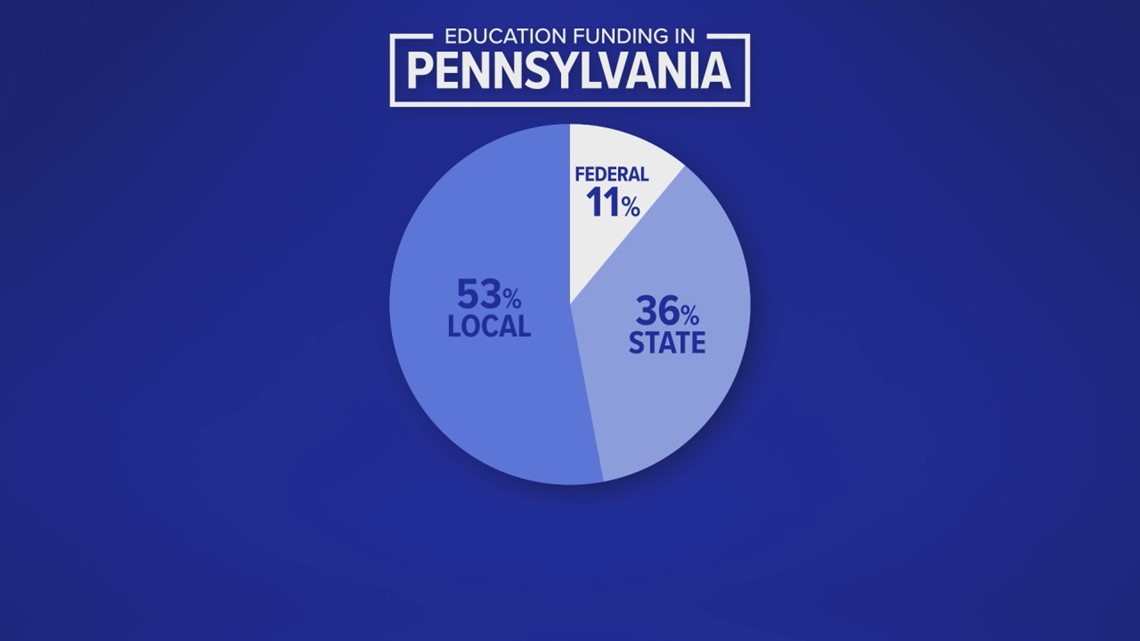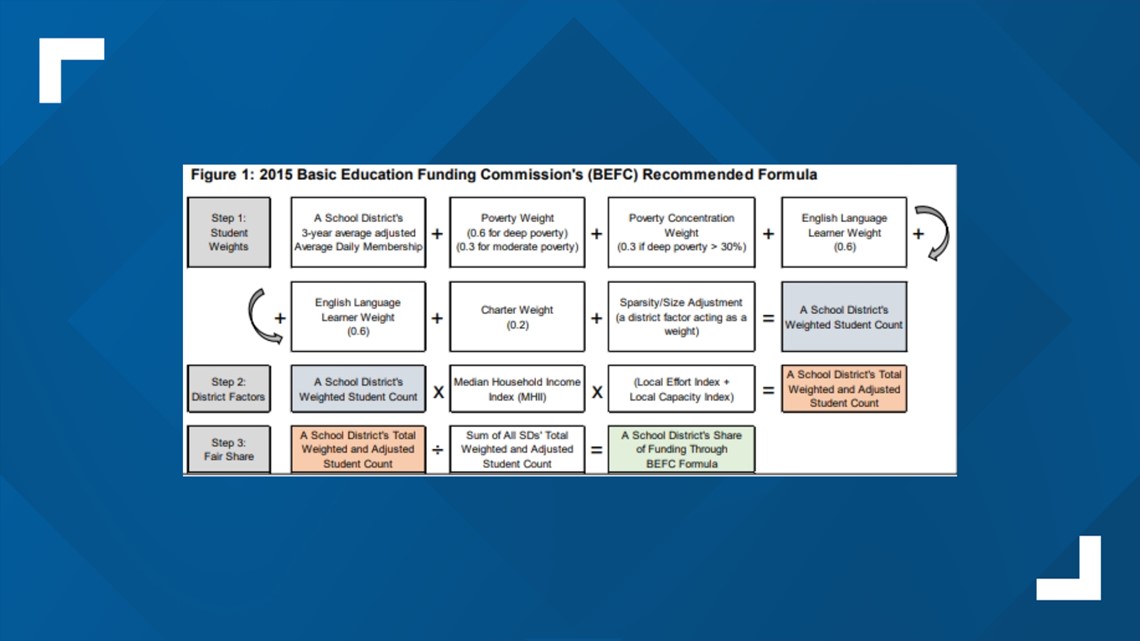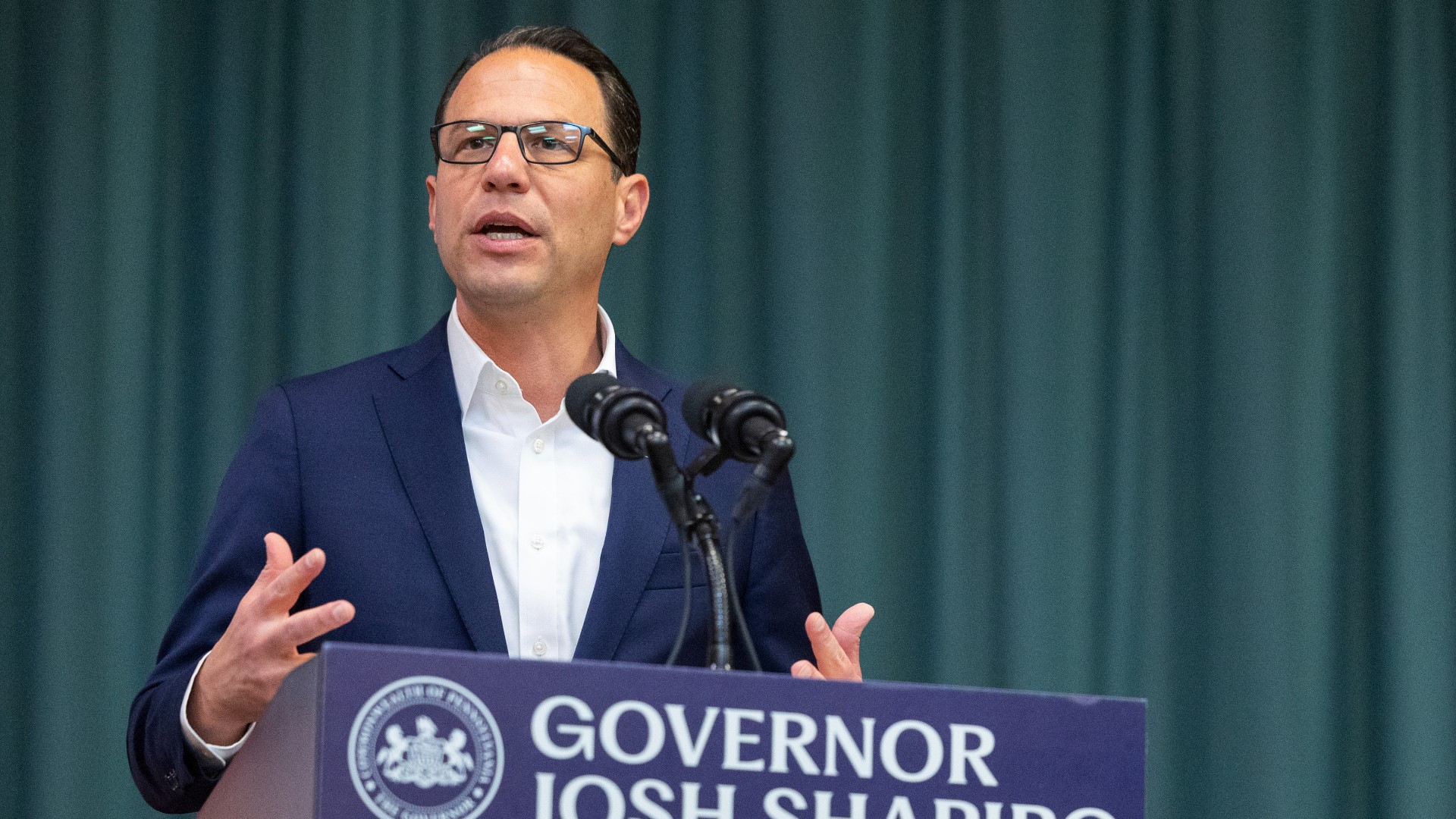HARRISBURG, Pa. — Pennsylvania Governor Josh Shapiro will give his annual budget address on Tuesday afternoon, outlining the spending he wants to see in the Commonwealth this year. With a recent Pennsylvania Supreme Court decision demanding lawmakers change how Pennsylvania funds its schools, time is of the essence in Harrisburg.
Last summer, Pennsylvania public schools took the state to court and won. The State Supreme Court found the Pennsylvania General Assembly created funding deficiencies for decades, leaving gaps between high-wealth and low-wealth school districts.
It ruled the current system is unconstitutional and that lawmakers must fix it.


Pennsylvania schools are funded in three ways: 11% comes from the federal government, 36% comes from the state, and the remaining 53% comes from localities, mainly local property taxes. Depending on zip code, a school district’s share of state education funding can vary widely.
The state uses two methods to decide how much state funding a school receives. The first is called hold harmless. It's based on the principle that districts should never get less than they did last year.
“Some of these school districts have lost 50% to 60% of their students but they're still getting the same amount of money,” said Nathan Benefield, senior vice president of the Commonwealth Foundation. “That's propping up buildings, it's propping up staff and focusing on adults and not kids.”
“Would you do that?” asked Republican State Senator Greg Rothman, a member of the Basic Education Funding Commission. “Where else in your life, would you keep spending money on something, despite the fact that you know, you're declining?”
Hold harmless is the method predominantly used to fund Pennsylvania public schools since the mid-2000s.
Then in 2015, to adjust for poverty, changing student populations, and other needs of districts, a bipartisan group of lawmakers called the Basic Education Funding Commission created a way to address those problems.
Republican State Senator Kristin Phillips-Hill is co-chair of the commission.
“The law says that every five years, the Basic Education Funding Commission has to be reconstituted, to evaluate if the funding formula being used to drive out basic education funding dollars, is doing a good job,” Phillips-Hill said.
Their solution was called BEFC's Fair Funding Formula.
It determines how much each school district receives, weighting the results based on how many kids are in a district, how many are in poverty and how many are learning English as a second language.


Still, not all state education money runs through this formula. Lawmakers decided only new education dollars that come into the budget would go through this formula.
Right now, just 25% of state education funding is handed out using the fair funding formula, something Shapiro could propose to change in his budget address.
Democratic State Representative Mike Sturla is the other BEFC co-chair.
“What we've done is said, okay, we're not going to touch hold harmless,” Sturla said. “Right now 350 school districts benefit from hold harmless and 150 school districts are hurt. If you put the dollars into the base like we're proposing, you end up with about 50 school districts that are benefiting from hold harmless, and they're not benefiting by much. At that point in time, the point sort of becomes moot.”
“I didn't understand why first got to the house, we voted on the current formula [and] we only applied it to new money,” Rothman said. “Why not apply it to all the money? If it's a fair funding formula, which I believe this is.”
“What you have to remember is there were a lot of people who said we need to push all dollars through that new formula, the formula adopted in 2015,” Phillips-Hill said. “When you crunched the numbers and you looked at that there were about 300-plus school districts that would have been bankrupted by that.”
Representatives from the Pennsylvania School Boards Association said the formula can make it hard for districts to set their budgets.
“We do think it is doing a good job, but one thing that happens as more dollars get put into the formula is we see greater volatility,” said Andy Christ, PSBA’s senior director of education policy. “One year a district might be up a million dollars and then the next year they could be down a million dollars. That sort of lack of predictability is very difficult for our members, as they try to project forward and look into future years.”
After the Pennsylvania Supreme Court’s decision, the Basic Education Funding Commission spent the year traveling the state to make recommendations to help address the issue.
Last month, BEFC outlined two different sets of recommendations, voted along party lines. Rep. Sturla backed the majority report.
“We looked at successful schools around the state of Pennsylvania, and what they spend on students,” Sturla said. “If we spent that amount on students and demanded that schools actually use proven data and proven programs that get results, then we should be able to get a good result back out of that. What we came up with was a number of $5.2 to $5.4 billion necessary to go into the fund.”
Pennsylvania State Education Association is in support of the majority plan.
“When we saw what the majority report was, we were so pleased with what they were suggesting, because it's something that we've been talking about for decades that our students in our schools need,” said Aaron Chapin, president of the association. “It's a seven-year plan because more than $5 billion of new money is a lot to invest. We can't fix this overnight. This problem has been caused over decades of neglect.”
Republicans prepared their own set of recommendations in a minority report which was not adopted by the commission. Senator Rothman said he suggested the commission prepare a consensus report, a motion he said was denied.
“It's not our responsibility to come up with a dollar amount, that's the responsibility of the legislature,” Rothman said. “I don't think it would be prudent. I can't imagine what would happen if you added another $7 billion. Where are we going to get that money from?”
“I still listen to colleagues who talk about having public schools in their districts that have 0% proficiency in math and 0% proficiency in reading. So clearly, throwing more money isn't the only solution to the problem,” Phillips-Hill said. “If you look in that minority report that I supported, you'll find greater measures of accountability, measures of reform, best practices to see student achievement increase.”
“Our concern is much more, how is that money being distributed,” Benefield added. “We've had massive increases in funding, but a lot of it isn't being distributed in an equitable way.”
“We've still got to negotiate all this and this is where the sort of rubber hits the road,” Sturla said.
It remains to be seen how much Governor Shapiro will allocate to education in his budget.
The governor’s budget address is scheduled for 12:30 p.m. on Tuesday, Feb. 6.

